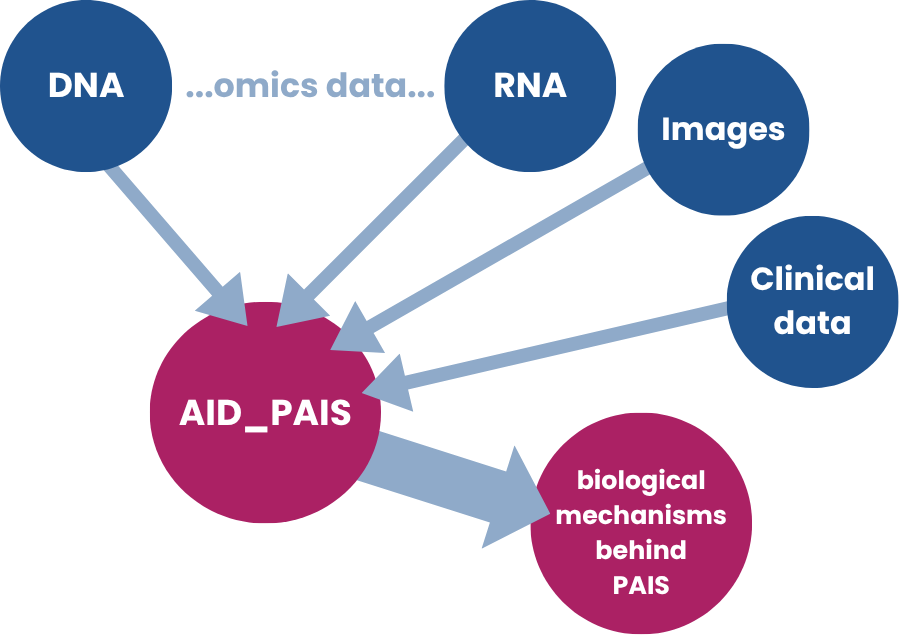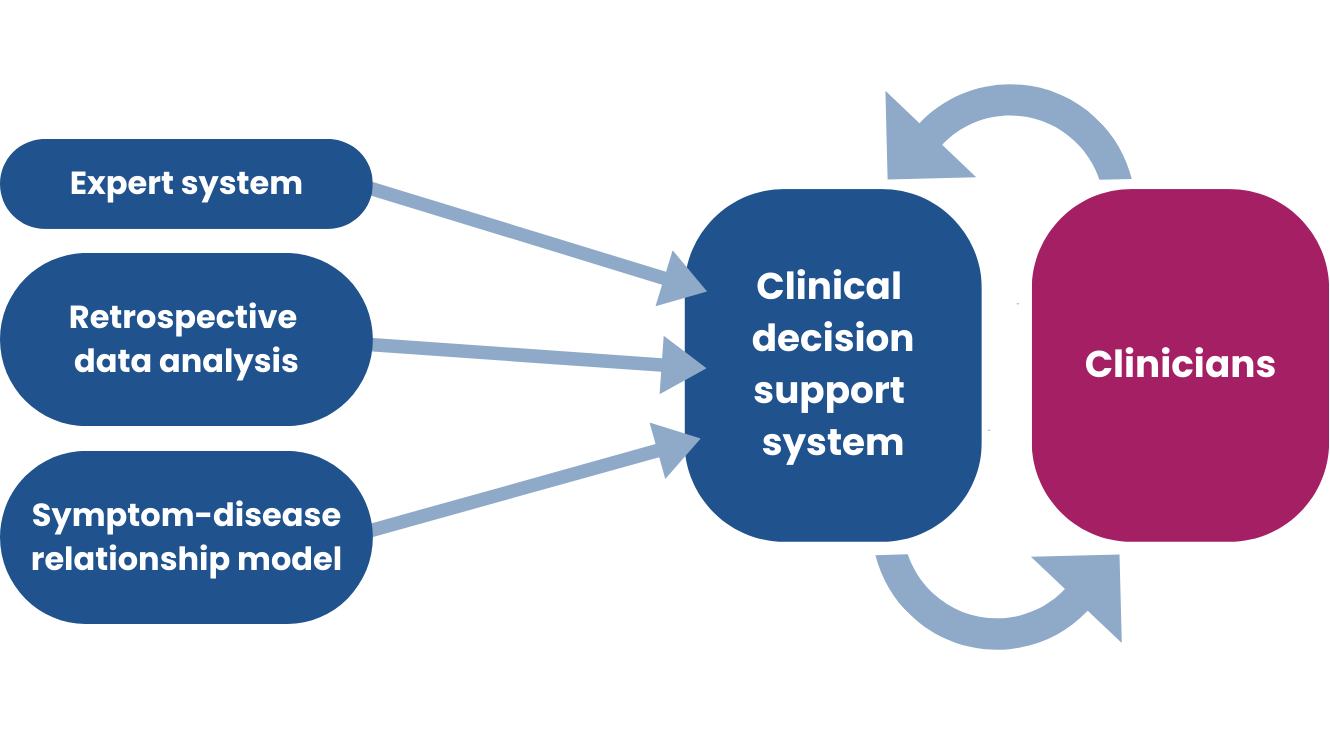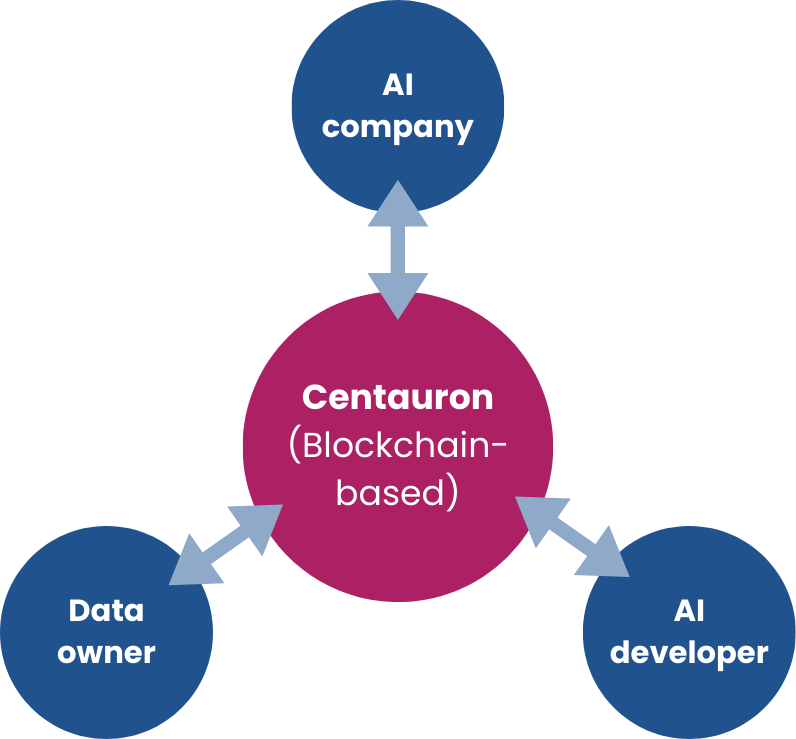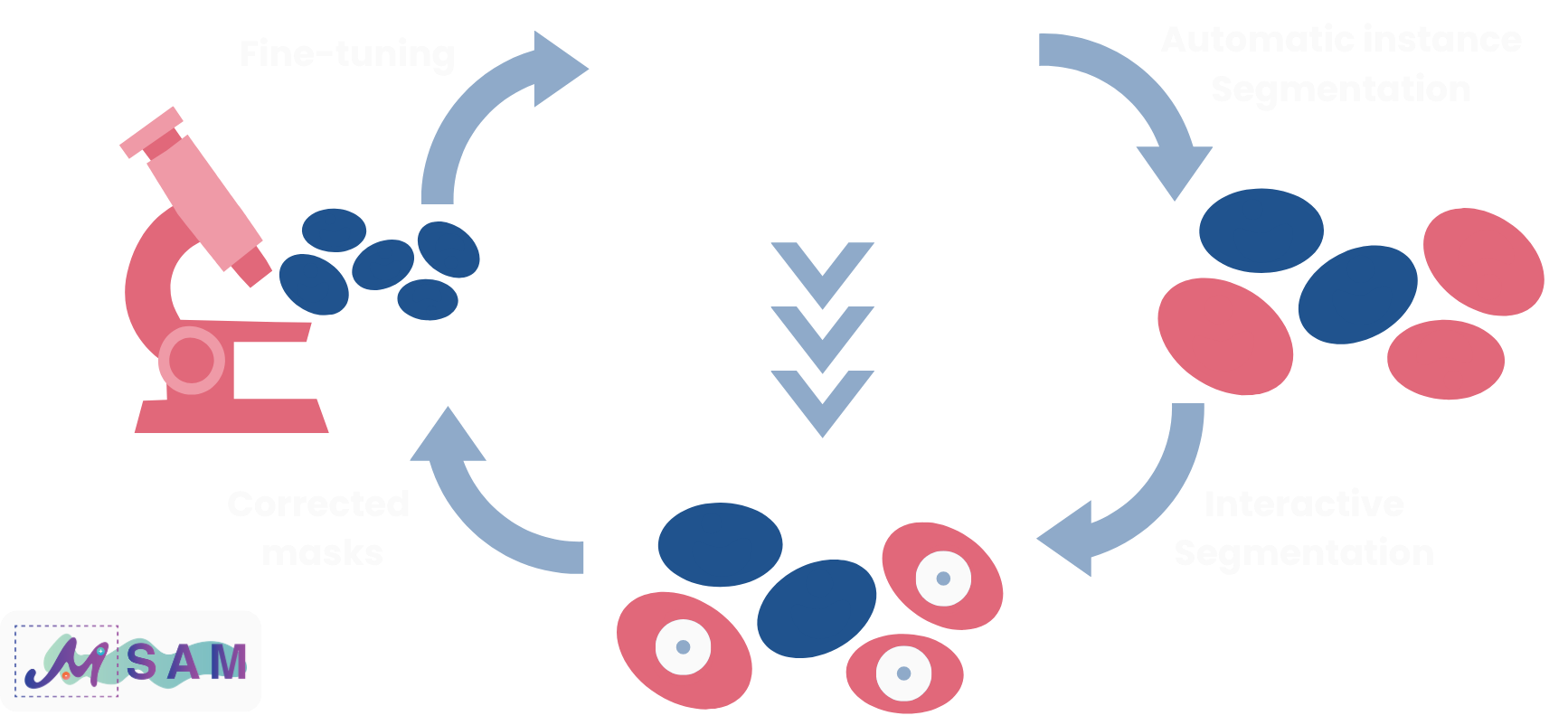Use Cases
Hier stellen wir Use Cases vor, die mithilfe der CAIMed-Forschung realisiert werden. Die Anwendungsbeispiele veranschaulichen, wie die im Projekt entwickelten Methoden und Erkenntnisse in der Praxis eingesetzt werden könnten. Die kurzen Beschreibungen erläutern die zugrunde liegenden Ideen, zentralen Fragestellungen und technische Hintergründe, um einen Eindruck zu vermitteln, welche Potenziale die CAIMed-Forschung bietet.


Durch die Entwicklung präziser, datenschutzkonformer Modelle aus verteilten Datensätzen ermöglicht FEDCOV Gesundheitsdienstleistern die gemeinsame Erstellung von Vorhersagemodellen für den Schweregrad von COVID-19, Langzeitsymptome und Behandlungsergebnisse, ohne sensible Patientendaten weitergeben zu müssen. Dieser Ansatz gewährleistet die Sicherheit der Patientendaten und ermöglicht gleichzeitig die Erstellung robuster Modelle, die die klinische Entscheidungsfindung und personalisierte Behandlungspläne verbessern können. Darüber hinaus befasst sich das Projekt mit Fairness und Interpretierbarkeit und stellt sicher, dass die Modelle unvoreingenommen und transparent sind, was für eine gerechte Gesundheitsversorgung verschiedener Patientengruppen von entscheidender Bedeutung ist.
Team:
KI & Kausalität

Es werden KI-gestützte Modelle entwickelt, um die Diagnose und Behandlung von Infektionen und postakuten Infektionssyndromen zu verbessern. Diese Modelle analysieren komplexe Datensätze, um Wechselwirkungen zwischen Wirt und Erreger aufzudecken und den Krankheitsverlauf vorherzusagen. Ziel ist es, gezielte, wirksame Interventionen anzubieten, die die Genesungsergebnisse verbessern und die Belastung des Gesundheitswesens verringern.
Team:

Die Prävalenz von PAIS ist nach wie vor kaum bekannt, was die Notwendigkeit tieferer Einblicke in seine biologischen Mechanismen unterstreicht. AID-PAIS wird verschiedene Datentypen analysieren, molekulare Signaturen identifizieren und kausale Zusammenhänge aufdecken, die zu anhaltenden Symptomen führen. AID-PAIS zielt darauf ab, die Diagnosegenauigkeit zu verbessern, personalisierte Behandlungen zu ermöglichen und Fehldiagnosen zu reduzieren, um letztlich die Strategien im Bereich der öffentlichen Gesundheit zu verbessern, die langfristigen Gesundheitskosten zu senken und die Vorsorge für zukünftige Pandemien zu stärken.
Team:
KI & Bioinformatik

Basierend auf dem Datensatz aus dem ELISE-Projekt wurde ein regelbasiertes Kennzeichnungsmodell erstellt, auf dessen Grundlage ein Vorhersagemodell entwickelt wird, das eine Sepsis 6 bis 12 Stunden vor Ausbruch der Krankheit vorhersagen kann. Dieses Modell soll eine frühzeitige Therapie ermöglichen und dazu beitragen, die negativen Auswirkungen einer Sepsis auf den Krankheitsverlauf kritisch kranker Kinder zu verhindern.
Team:

Zur Analyse und Behandlung von MODS (Multi-Organ-Dysfunktionssyndrom) bei Patienten in der pädiatrischen Intensivmedizin wird ein Modell entwickelt, mit dem Daten aus einem komplexen Datensatz der pädiatrischen Intensivmedizin verarbeitet und analysiert werden können. Dieses Modell zielt darauf ab, kausale Zusammenhänge im Verlauf von MODS zu identifizieren, um ein besseres Verständnis und eine bessere Vorhersage von Organfunktionsstörungen zu ermöglichen.
Team:
Klinische Entscheidungsunterstützung

Der vorgeschlagene symbolische Lernansatz nutzt eine ontologische Abstraktion von Domänenwissen, um die Extraktion interpretierbarer und semantisch gültiger Horn-Regeln aus einem Wissensgraphen zu steuern. Die Anwendung von Domänenwissen ist entscheidend für die Erleichterung der Extraktion interpretierbarer und semantisch gültiger Informationen. Ein neurosymbolisches System, das symbolisches Lernen aus medizinischen Ontologien, induktives Lernen und semantische Constraint-Validierung integriert, um interpretierbare Horn-Regeln aus Wissensgraphen zu extrahieren. In Anwendung auf den Kontext der Lungenkrebsbehandlung verbessert unser Ansatz die Vorhersage neuer medizinischer Zusammenhänge und gewährleistet gleichzeitig die semantische Übereinstimmung mit etabliertem Fachwissen.
Team:
Semantische Modelle

ME/CFS ist eine häufige, schwere und komplexe Erkrankung mit einer Vielzahl von Symptomen, die häufig durch Infektionen ausgelöst wird. In Deutschland sind etwa 500.000 Menschen davon betroffen. DETECT-ME/CFS hat sich zum Ziel gesetzt, eine Software zu entwickeln, die den Diagnoseprozess unterstützt und verbessert. Die Software umfasst eine Feedbackschleife mit Ärzten, um eine kontinuierliche Qualitätsverbesserung zu ermöglichen.
Team:

Während sich DETECT-ME/CFS auf die Diagnose von ME/CFS konzentriert, zielt AID-PAIS auf die anschließende Therapieauswahl und -verwaltung ab. Durch die Erstellung eines physiologischen Modells kann AID-PAIS den zeitlichen Verlauf des Syndroms bei ME/CFS-Patienten simulieren. Auf der Grundlage dieser Vorhersagen werden für jeden Patienten optimale, individuell abgestimmte Behandlungen ausgewählt. AID-PAIS ermöglicht eine effiziente und präzise, auf jeden Einzelnen zugeschnittene Versorgung.
Team:

Da viele Patienten an postakuten Infektionssyndromen (PAIS) leiden, ist es unerlässlich, wirksame Präventionsstrategien zu untersuchen. Da diese Syndrome durch verschiedene Infektionen ausgelöst werden können, sollte eine Interventionsstrategie aus der Perspektive der Bevölkerung entwickelt werden. Das AIMS-Projekt nutzt KI-gestützte Bevölkerungssimulationen, um solche Strategien zu entwerfen und zu testen, mit dem Ziel, die Gesamtbelastung durch PAIS zu minimieren.
Team:
Mathematische Modelle

Durch den Einsatz der KI-gestützten elektrischen Impedanztomographie (EIT) können Forscher aus minimalen elektrischen Daten hochauflösende Lungenbilder rekonstruieren. Dies ermöglicht die Früherkennung subtiler Lungenschäden und die Echtzeitüberwachung am Krankenbett. Da das Verfahren nicht invasiv und kostengünstig ist, können Veränderungen der Lungenfunktion umgehend behandelt werden, wodurch Komplikationen reduziert und die Genesung beschleunigt werden können.
Team:
Digitale Zwillinge

Bei der Entwicklung von KI-Modellen im Gesundheitswesen bringt Centauron Krankenhäuser, Forscher und andere Interessengruppen zusammen, um eine sichere, kooperative Entwicklung und kontinuierliche Verbesserung von KI-Tools zu unterstützen. Es schützt das geistige Eigentum aller Beteiligten und stellt sicher, dass jede Aktion transparent in einer Blockchain aufgezeichnet wird. Die Dateninhaber behalten die volle Kontrolle darüber, was mit wem und unter welchen Bedingungen geteilt wird. Auf diese Weise können Institutionen gemeinsam KI-Modelle trainieren und gleichzeitig die Privatsphäre der Patientendaten wahren, was die Entwicklung präziser und vertrauenswürdiger Lösungen für das Gesundheitswesen beschleunigt.
Team:
Kollaborative Entwicklung & Validierung

Eine verlässliche Analyse biomedizinischer Bilddaten ist entscheidend, um Krankheitsmechanismen zu verstehen. Foundation-Modelle bieten neue Möglichkeiten zur Analyse komplexer Bilddaten wie Mikroskopie oder Computertomografie. Die vorliegende Arbeit untersucht diesen Ansatz in der Mikroskopie, Histopathologie und medizinischen Bildgebung anhand von μSAM, PathoSAM und MedicoSAM, die auf dem Segment-Anything-Modell basieren und Zellen, Zellkerne, Gewebe und Organe in verschiedenen Bildgebungsmodalitäten segmentieren. Diese Entwicklungen zeigen, wie Foundation-Modelle die Flexibilität, Reproduzierbarkeit und Effizienz in der biomedizinischen Bildanalyse über viele Anwendungsbereiche hinweg verbessern können. Die Modelle werden bereits weit verbreitet eingesetzt, um verschiedenste Analyseaufgaben zu beschleunigen.
Projektleiter:




















